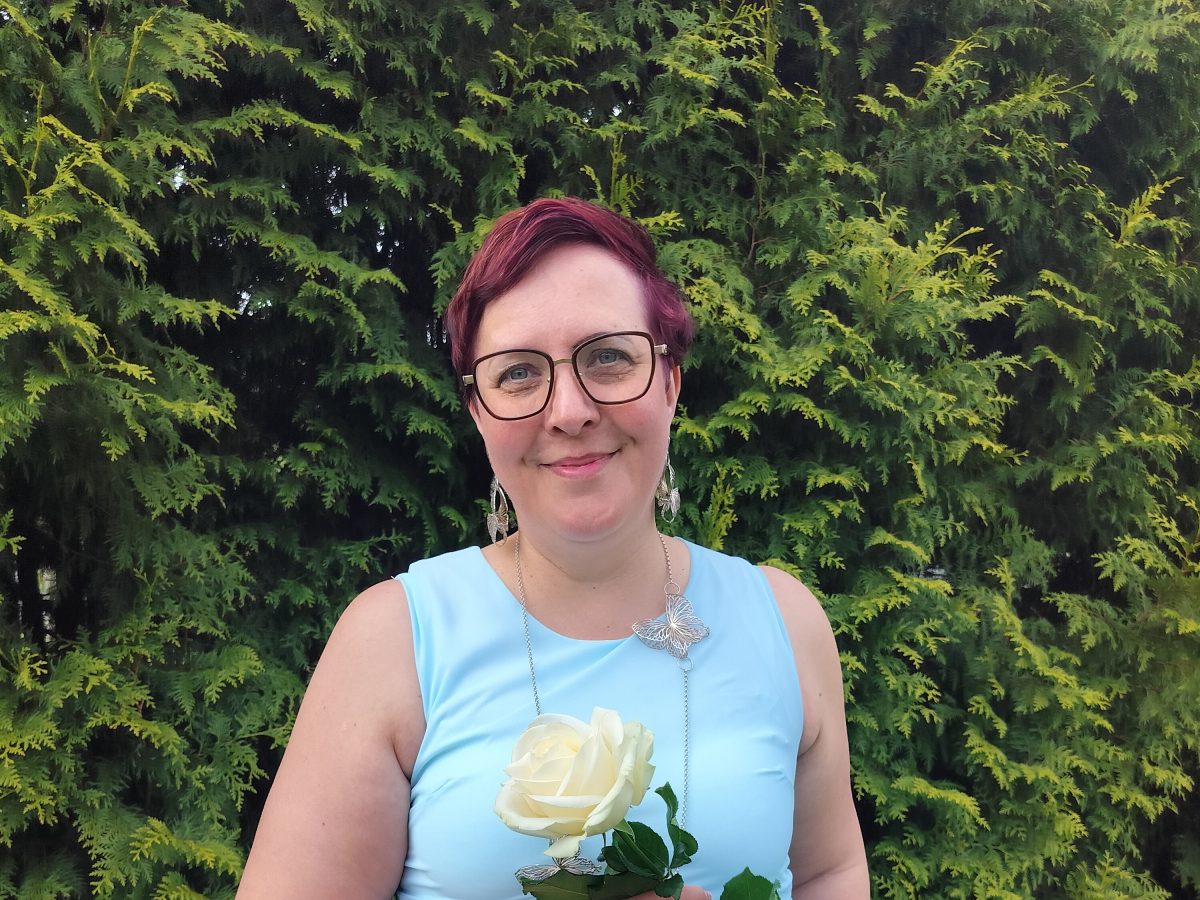Exactly 25 years between two master’s degrees is a long time in an individual’s life. In my thesis processes, I found something new, something old, something borrowed—and even something blue.
Something new
As a young master’s student, the goal was to earn a degree and get a job. Twenty-five years later, as a mother of three, studying became a personal goal. Studying was very different then, as there were no work or life obligations. The new part was planning my time carefully so I could do everything.
Official thesis processes have changed a lot in 25 years. Nowadays, guidelines are detailed and available online, such as SAMK’s instructions. Literature and other information are now more abundant and readily accessible electronically. Theses are no longer printed and bound in black leather with gold lettering to gather dust in library stacks. They are available digitally, mostly under the “open access” principle, and my own work can be found in the Theseus system for published theses.
AI has become a theme in studies and theses over the past couple of years. AI is a useful tool for searching for information and for language-checking, but I believe the thesis should still be the student’s own planning and writing. A thesis is a process that should—and does—impact one’s thinking.
In a YAMK (Master’s level) thesis, the thesis portion makes up one third, so its importance in learning was emphasized compared to the pre‑Bologna structure. Previously in Finnish universities, one entered directly into master’s studies without a bachelor’s degree. Internationality has become part of Finnish higher education. When I did my thesis, it was in Finnish in a Finnish-language program, and I wouldn’t have thought to use English.
Twenty-five years later, after an international research career, studying and writing a thesis in English was a natural choice. An English-language thesis also has a wider reach than a Finnish one. The celebratory moments have changed too: 25 years ago there was no joint master’s graduation ceremony, or at least I don’t remember one. SAMK organized a formal graduation ceremony in June 2025. Though I’ve worked at SAMK since 2012, I participated in that ceremony only upon my own graduation.
Something old
Even though the thesis might be a personal goal and “my own time,” there are always elements that remain the same throughout eras. Anyone who has written a thesis or similar demanding work will recognize the surprising motivation to tidy up when they should be sitting at the computer starting the next part. You never find time for a thesis unless you dedicate time to it.
The best guideline I’ve followed for a MBA thesis has been: “Do it even if you don’t have time.” The pain of creation and procrastination are natural parts of the learning and writing process. Of course, one is not always motivated or inspired, and then it’s better to do something else. In my case, healthy breaks, audiobooks, and music supported my writing process. A thesis that is energizing as a topic and, for example, connected to one’s own work, motivates and brings joy of success.
Supervisor support is also central, as they guide and advise the thesis writer whenever needed. It’s important to remember that a thesis is “just” a thesis—not life’s mission.
Something borrowed
You can and should rhythmically structure your thesis work. Lecturer Anne Sankari’s tip on LinkedIn about the Pomodoro technique was excellent. In the Pomodoro technique, tasks are broken into 25‑minute intervals with 5‑minute breaks. I found that using Pomodoro improved my focus and, for example, prevented me from scrolling social media. In general, one should limit social media when writing a thesis, because it passivates and distracts attention.
You don’t need to walk the thesis process alone. My classmates Minna, Anita and I formed a WhatsApp group where we exchanged thoughts about our theses. Weekly Sunday evening video calls helped push things forward when you’ve promised your peers you’ll complete the next step. Official thesis presentations with three rounds of opposition during the process were also helpful.
Something blue
The topics of my theses—environmental science and sustainable business—are very different, but water tied them —are very different, but water connects them from different viewpoints. I completed my first thesis on drinking water in 2000, and now, in 2025, my MBA thesis covers maritime logistics. Writing a master’ s-level together from different viewpoints. I completed my first thesis in 2000 on drinking water, and now in 2025 my MBA thesis covered maritime logistics. Writing a master’s level thesis 25 years apart was an enriching experience. Studying as an adult has brought me a new “Spring of Learning.” My intention is to continue my studies along “blue” themes.
Three key tips for writing a thesis
- A thesis is a process: break it down and schedule it. Be firm yet forgiving yourself.
- Read the guidelines and follow them.
- Form a peer support group with fellow students and meet regularly.
Author: Chief Researcher Minna M. Keinänen‑Toivola, SAMK Maritime Logistics Research Center
Photo: Matilda Toivola
The text is translated with help of ChatGPT from: Jotain uutta, jotain vanhaa, jotain lainattua ja jotain sinistä ─ Opinnäytetyöprosessit 25 vuoden välein

